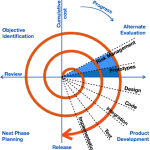Master Lumion Software With Our Engaging Tutorial For Spectacular Results!
Lumion Software Tutorial: Unleash Your Architectural Visualization Skills
Introduction
Dear Readers,
1 Picture Gallery: Master Lumion Software With Our Engaging Tutorial For Spectacular Results!

Welcome to our in-depth tutorial on Lumion software, a powerful tool for creating stunning architectural visualizations. Whether you are an architect, a designer, or simply a creative individual seeking to bring your visions to life, Lumion offers a user-friendly platform to transform your ideas into captivating virtual experiences. In this tutorial, we will guide you through the key features, advantages, and techniques of Lumion, enabling you to unlock your full potential as a visualization artist.

Image Source: ytimg.com
So, let’s dive into the world of Lumion and explore the endless possibilities it offers!
Table of Contents
1. What is Lumion?
2. Who can benefit from Lumion?
3. When should you use Lumion?
4. Where can Lumion be used?
5. Why choose Lumion?
6. How to use Lumion effectively?
7. Advantages and disadvantages of Lumion
8. Frequently Asked Questions (FAQ)
9. Conclusion
10. Final Remarks and Disclaimer
What is Lumion? 🌟
Lumion is a cutting-edge 3D rendering software that empowers architects and designers to create realistic visualizations of their projects. With its intuitive interface and extensive library of high-quality assets, Lumion makes it easy to transform your architectural designs into stunningly lifelike scenes. Whether you want to showcase interior spaces, landscape designs, or entire urban environments, Lumion provides the tools and features to bring your ideas to life with breathtaking realism.
Key features of Lumion:
Real-time rendering capabilities: With Lumion, you can instantly see the changes you make to your design, allowing for quick iterations and efficient workflows.
Library of high-quality assets: Lumion offers a vast collection of pre-built objects, materials, and effects, enabling you to populate your scenes with realistic elements.
Advanced lighting and shadowing: Lumion’s advanced lighting system allows you to create dynamic lighting conditions and realistic shadows, enhancing the overall realism of your visualizations.
Effortless landscape creation: With Lumion’s terrain and foliage tools, you can easily create realistic landscapes, gardens, and outdoor environments.
Seamless integration with popular design software: Lumion integrates seamlessly with popular CAD and 3D modeling software, allowing you to import your designs directly into Lumion for visualization.
By harnessing the power of Lumion, architects and designers can effectively communicate their design intent, impress clients, and gain a competitive edge in the industry. Now, let’s explore who can benefit from this remarkable software.
Who can benefit from Lumion? 🏢
Architects, interior designers, landscape designers, and urban planners are just a few professionals who can benefit tremendously from using Lumion. Whether you work in a large architectural firm or as an independent practitioner, Lumion provides a platform for you to create compelling visualizations that will captivate your clients and stakeholders.
Furthermore, students and educators in the field of architecture and design can utilize Lumion to enhance their learning experiences. Lumion’s user-friendly interface and comprehensive feature set make it accessible even to beginners, allowing them to develop their visualization skills and bring their design ideas to life.
When should you use Lumion? ⏰
Lumion can be used at various stages of the design process, from initial concept development to final presentations. Here are some key scenarios where Lumion can be particularly valuable:
Conceptual Design:
During the early stages of a project, Lumion enables you to quickly visualize and explore different design options. By rendering your concepts in Lumion, you can evaluate their visual impact and make informed decisions about the direction of your design.
Client Presentations:
Lumion’s realistic visualizations are perfect for client presentations. With Lumion, you can take your clients on a virtual tour of their future spaces, allowing them to fully immerse themselves in the design and gain a comprehensive understanding of the project.
Marketing and Promotion:
Lumion’s high-quality renderings can be used to create compelling marketing materials, such as brochures, websites, and videos. These materials can help attract potential clients, investors, and buyers by showcasing the beauty and functionality of your designs.
Competition Entries:
If you’re participating in architectural competitions, Lumion can give your entries a competitive edge. By creating visually stunning presentations, you can effectively communicate your design concept and stand out among other participants.
As you can see, Lumion offers immense value throughout the design process, enabling you to create engaging visualizations at every stage. Now, let’s explore the geographical scope of Lumion’s application.
Where can Lumion be used? 🌍
Lumion can be used globally, regardless of the location or scale of your project. Its versatility and compatibility with popular design software make it accessible to architects and designers around the world. Whether you are working on residential projects, commercial developments, or large-scale infrastructure, Lumion empowers you to bring your vision to life, no matter where you are.
Why choose Lumion? ❓
When it comes to architectural visualization, Lumion stands out as a top choice for many professionals. Here are some compelling reasons why you should consider using Lumion:
Intuitive User Interface:
Lumion’s user-friendly interface makes it easy to navigate and learn, even for beginners. With its drag-and-drop functionality and extensive library of assets, you can quickly create stunning visualizations without extensive technical knowledge.
Realistic Renderings in Real Time:
Lumion’s real-time rendering capabilities allow you to see the changes you make to your scene instantly. This real-time feedback enables you to iterate quickly and make informed design decisions, saving you time and effort.
Extensive Asset Library:
With Lumion’s vast library of high-quality objects, materials, and effects, you can populate your scenes with realistic elements. From furniture and vegetation to lighting fixtures and weather effects, Lumion provides everything you need to create immersive visualizations.
Efficient Collaboration:
Lumion’s compatibility with popular design software and its ability to import models seamlessly make it an ideal tool for collaborative work. You can easily share your Lumion projects with team members and clients, fostering effective communication and collaboration.
Realistic Lighting and Shadowing:
Lumion’s advanced lighting system allows you to create dynamic lighting conditions and realistic shadows, enhancing the overall realism of your visualizations. With Lumion, you can accurately showcase the interplay of light and shadow in your designs.
These are just a few reasons why Lumion has gained popularity among architects and designers worldwide. Now, let’s delve into the techniques and best practices for using Lumion effectively.
How to use Lumion effectively? 🎨
To make the most of Lumion’s capabilities, consider the following tips and techniques:
1. Plan your scene:
Before diving into Lumion, spend time planning your scene. Consider the desired mood, composition, and focal points of your visualization. Sketch out a rough layout to guide your work in Lumion.
2. Optimize your model:
For optimal performance, ensure that your 3D model is clean and well-optimized before importing it into Lumion. Remove any unnecessary geometry, merge objects where possible, and simplify complex details.
3. Take advantage of Lumion’s assets:
Explore Lumion’s extensive asset library and use a variety of objects, materials, and effects to enhance your scene. Experiment with different combinations to achieve the desired look and feel.
4. Utilize the weather system:
Lumion’s weather system allows you to create various atmospheric conditions, such as rain, snow, or fog. Experiment with different weather effects to add depth and realism to your visualizations.
5. Pay attention to lighting:
Lighting plays a crucial role in creating realistic visualizations. Experiment with different lighting setups to achieve the desired ambiance and highlight key features of your design.
6. Utilize camera effects:
Lumion offers various camera effects, such as depth of field and motion blur, to enhance the cinematic quality of your visualizations. Experiment with these effects to create captivating and dynamic scenes.
By following these tips and exploring Lumion’s features, you can unlock your full potential as a visualization artist and create stunning architectural renderings.
Advantages and Disadvantages of Lumion 📊
Like any software, Lumion has its strengths and limitations. Let’s explore the advantages and disadvantages of using Lumion for architectural visualization:
Advantages:
Real-time rendering capabilities allow for quick iterations and efficient workflows.
Intuitive user interface makes it accessible to beginners.
Extensive library of high-quality assets enables the creation of realistic scenes.
Seamless integration with popular design software streamlines the workflow.
Efficient collaboration features facilitate effective communication with team members and clients.
Disadvantages:
Requires a powerful computer to handle complex scenes and maintain real-time performance.
Limited customization options for certain elements and effects.
May not be suitable for highly technical or specialized visualizations.
Can be resource-intensive, requiring substantial storage space and processing power.
May require additional training to fully utilize advanced features and techniques.
While Lumion offers remarkable capabilities, it is essential to consider these advantages and disadvantages when deciding whether it is the right tool for your specific needs.
Frequently Asked Questions (FAQ) ❔
1. Can Lumion be used for interior design projects?
Yes, Lumion is a powerful tool for visualizing interior spaces. Its extensive library of furniture, materials, and lighting options allows for the creation of realistic interior scenes.
2. Can I use Lumion with my existing 3D models?
Yes, Lumion supports the import of 3D models from popular design software, such as SketchUp, Revit, and ArchiCAD. You can seamlessly integrate your existing models into Lumion for visualization.
3. Does Lumion require a high-end computer?
Lumion performs best with a powerful computer that meets its system requirements. To handle complex scenes and maintain real-time performance, a computer with a dedicated graphics card and sufficient RAM is recommended.
4. Can Lumion be used for creating virtual reality (VR) experiences?
Yes, Lumion offers VR support, allowing you to create immersive virtual reality experiences. With Lumion, you can explore your visualizations in a fully interactive and immersive manner.
5. Can Lumion be used for landscape design projects?
Absolutely! Lumion provides a range of tools and assets specifically designed for creating realistic landscapes, gardens, and outdoor environments. You can sculpt terrains, add vegetation, and create stunning natural scenes with ease.
Conclusion 🌟
In conclusion, Lumion is a game-changing software that empowers architects, designers, and visualization artists to create breathtaking architectural renderings. With its intuitive user interface, real-time rendering capabilities, and extensive library of assets, Lumion offers an unparalleled platform for transforming design concepts into stunning visualizations. Whether you are a professional in the industry or a student aspiring to develop your visualization skills, Lumion is a tool worth exploring.
So, why wait? Unlock your creative potential with Lumion, and embark on a journey of architectural visualization like never before.
Final Remarks and Disclaimer
Dear Readers,
As we conclude this Lumion software tutorial, we want to emphasize the importance of continuous learning and exploration in the field of architectural visualization. While this tutorial provides a comprehensive overview of Lumion and its capabilities, we encourage you to delve deeper, experiment, and discover your own unique visual style.
Please note that the information provided in this tutorial is based on our knowledge and experience at the time of writing. Software tools and features may evolve over time, so it is crucial to stay updated with the latest developments and advancements in the industry.
Remember, every architectural visualization project is an opportunity to push the boundaries of creativity and bring your visions to life. We wish you success in your future endeavors and hope that Lumion serves as a valuable tool in your journey as a visualization artist.
Happy rendering!
This post topic: Software Tutorials



